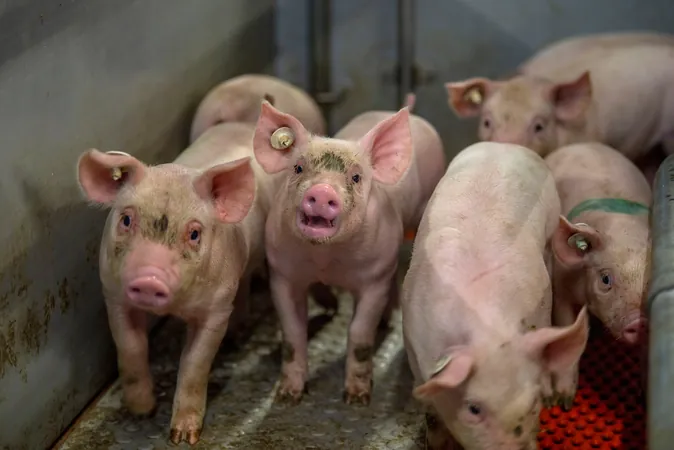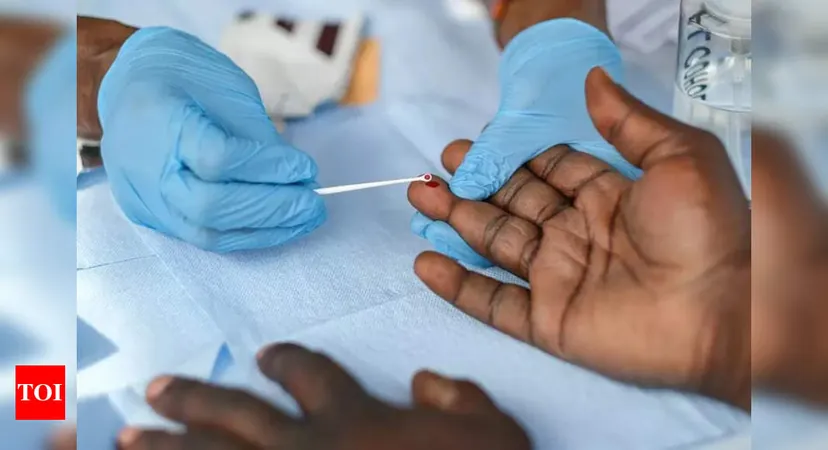
How Mycotoxins Heighten the Risk of Streptococcus suis Infections in Pigs: A Groundbreaking Study Unveiled
2025-01-13
Author: Nur
In a striking revelation for the agricultural and veterinary sectors, researchers have shed new light on the dangers posed by Fusarium mycotoxins, particularly deoxynivalenol (DON) and T-2 toxin, which are prevalent in pig diets. These toxins, often found together in approximately 45% of global pig feed, are notorious for compromising the intestinal barrier, heightening the risk of serious infections in swine.
The implications of this study are significant. Chronic exposure to these mycotoxins can make young piglets particularly vulnerable to infections by pathogenic bacteria, resulting in extended antibiotic treatment and increased veterinary costs. The research specifically investigates how these toxins affect the translocation of Streptococcus suis, a bacterium known to cause severe health issues in pigs, using advanced porcine intestinal organoid models.
Innovative Research Setup
To simulate the chronic exposure that occurs in farming conditions, porcine ileal organoids were used, replicating the pig's intestinal environment. The experimental setup involved exposing these organoids to DON at a concentration of 0.1 µM and T-2 at 0.01 µM individually and in combination, while co-culturing them with S. suis. These concentrations mirror those expected in the bloodstream following typical dietary exposure in pigs.
After 18 hours of cultured exposure, the integrity of the intestinal barrier was meticulously analyzed using techniques like fluorescent dextran permeability assays and transepithelial electrical resistance (TER) measures, shedding light on the potential for bacterial translocation.
Alarming Findings on Intestinal Integrity
The results revealed that while exposure to mycotoxins alone did not significantly disrupt the intestinal barrier's permeability, adding S. suis markedly increased solute permeability. Specifically, the combination of mycotoxins resulted in a significant drop in TER values, indicating compromised ionic barriers at critical levels.
Under normal conditions, when piglets are exposed to these mycotoxins, the TER initially dropped but later recovered. However, when both DON and T-2 toxins were present, along with S. suis, the TER remained significantly reduced, indicating a substantial risk for infection and disease.
Translocation of S. suis Amplified
One of the most troubling findings was the quantification of S. suis translocation, which was assessed by counting the bacterial colonies in both apical and basal compartments of the cultured cells. The results indicated that the presence of DON and T-2 toxins greatly enhanced the translocation of the bacteria into the basal compartment—essentially demonstrating that toxin exposure directly raises the risk of bacterial invasion in the bloodstream.
Scientists noted that the mycotoxins did not affect the growth of S. suis in isolation but when combined, they significantly escalated the number of bacterial colonies translocating across the intestinal barrier. This is a concerning development for pig farmers and producers as it may lead to higher prevalence rates of infections in swine populations.
Conclusion: A Call to Action for Pork Producers
This research underscores the urgent need for the veterinary community and pig farmers to monitor mycotoxin levels in animal feed closely. With the combined effects of DON and T-2 toxins increasing the susceptibility of pigs to S. suis, producers must be vigilant to prevent potential health crises within their herds.
Continuous education, effective screening for mycotoxins in feed, and possibly developing dietary strategies to mitigate these risks will be crucial in safeguarding pig health and, by extension, the pork industry as a whole. As the threat of mycotoxins persists, this study highlights the vital intersection of animal health, food safety, and public health, calling for action to address these looming challenges.





 Brasil (PT)
Brasil (PT)
 Canada (EN)
Canada (EN)
 Chile (ES)
Chile (ES)
 Česko (CS)
Česko (CS)
 대한민국 (KO)
대한민국 (KO)
 España (ES)
España (ES)
 France (FR)
France (FR)
 Hong Kong (EN)
Hong Kong (EN)
 Italia (IT)
Italia (IT)
 日本 (JA)
日本 (JA)
 Magyarország (HU)
Magyarország (HU)
 Norge (NO)
Norge (NO)
 Polska (PL)
Polska (PL)
 Schweiz (DE)
Schweiz (DE)
 Singapore (EN)
Singapore (EN)
 Sverige (SV)
Sverige (SV)
 Suomi (FI)
Suomi (FI)
 Türkiye (TR)
Türkiye (TR)
 الإمارات العربية المتحدة (AR)
الإمارات العربية المتحدة (AR)